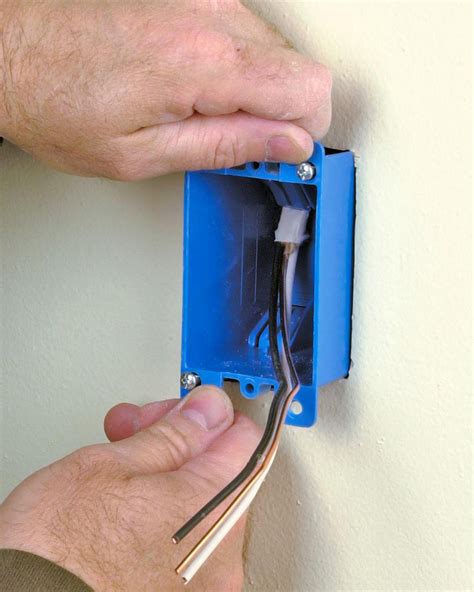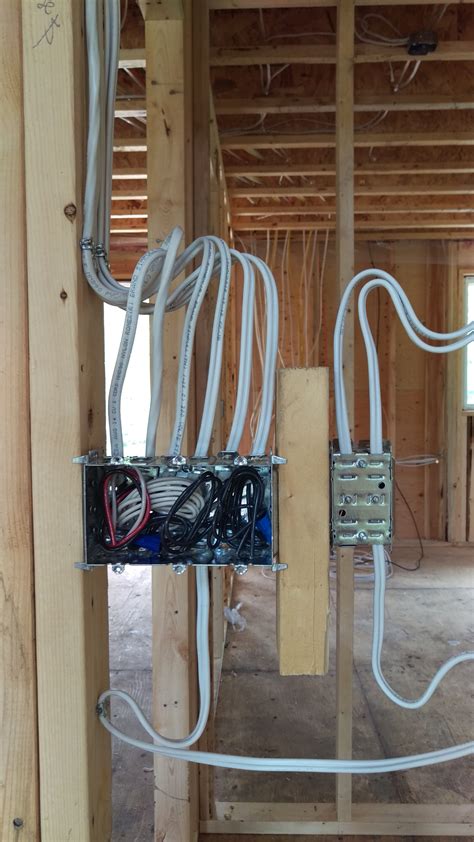electrical box for basement With the variety of different electrical boxes available at home centers, how do you know what to buy? Don’t worry, it’s not that complicated. We’ll whittle it down to about a dozen . The Legrand Wiremold 700 series raceway is ideal for surface mounting small amounts of electrical wiring or communication cables. Surface metal raceway allows you to add fixtures and outlets without disturbing the drywall, plaster or insulation in your home.
0 · metal electrical boxes
1 · how to install electrical box
2 · electrical wiring for basement
3 · electrical boxes for walls
4 · electrical boxes for homes
5 · electrical box for basement unfinished
6 · basement outlet box replacement
7 · basement electrical outlet box
One essential component of DIY wiring is the junction box, a crucial element that ensures safe electrical connections. In this blog, we’ll guide you through the process of safely installing and using junction boxes, providing valuable insights for DIY enthusiasts.
It's required by NEC 2008 in an unfinished basement unless the outlet is dedicated to a security or fire alarm system. You may also want to go with a 20A to give you plenty of flexibility with how you're able to use it in the future (larger .

With the variety of different electrical boxes available at home centers, how do you know what to buy? Don’t worry, it’s not that complicated. We’ll whittle it down to about a dozen . Use a metal electrical box when metal-sheathed cable (also called armored BX cable) or metal conduit runs in or out of the box. Metal cable and conduit depend on the contact from its metal sheathing to the metal box to .Learn how to rough in basement electrical wiring and how to wire your basement. Wiring basics from a DIY basement finish. AV equipment and a home theater. Plastic boxes and flexible nonmetallic cable (commonly called Romex) put electrical wiring projects within the skill range of every dedicated DIYer. In this article, we’ll show you some house wiring basics—how to .
It's required by NEC 2008 in an unfinished basement unless the outlet is dedicated to a security or fire alarm system. You may also want to go with a 20A to give you plenty of flexibility with how you're able to use it in the future (larger power tools, sump pump, etc.). Electrical boxes encase wire connections to protect them from short circuits. They are vital for fire safety and are used for receptacles, ceiling fans, outside outlets, and more. Unless the device is one of the few that contains its own wires, it likely will need an electrical box.
Selecting the right electrical box for your project can be confusing because of the many options available. Whether you’re starting new construction or adding to existing wiring, understanding the different types of electrical boxes helps for a safe installation. Below, I'll walk you through the basics of adding surface-mounted wiring to your garage or basement. Before you buy a single stick of conduit or measure for your new bench or workspace, work out a plan. Will you be running power-hungry tools like circular saws, routers or .
With the variety of different electrical boxes available at home centers, how do you know what to buy? Don’t worry, it’s not that complicated. We’ll whittle it down to about a dozen boxes to cover almost every situation.
Use a metal electrical box when metal-sheathed cable (also called armored BX cable) or metal conduit runs in or out of the box. Metal cable and conduit depend on the contact from its metal sheathing to the metal box to complete grounding.Learn how to rough in basement electrical wiring and how to wire your basement. Wiring basics from a DIY basement finish. AV equipment and a home theater. Plastic boxes and flexible nonmetallic cable (commonly called Romex) put electrical wiring projects within the skill range of every dedicated DIYer. In this article, we’ll show you some house wiring basics—how to position outlet and switch .
How and where you must position your electrical outlets in a basement depends on whether the area is finished, unfinished, and what you are using the space for. You must consider the minimum number of required receptacle outlets, including those for appliances, the height requirements, the spacing requirements, and circuit protection devices.Here we describe matching 15-Amp receptacles to 15-Amp circuits, 20-Amp receptacles to 20-Amp circuits, two-wire receptacles where no ground is present, GFCI and AFCI electrical receptacles, and the proper electrical box to hold and mount these devices.It's required by NEC 2008 in an unfinished basement unless the outlet is dedicated to a security or fire alarm system. You may also want to go with a 20A to give you plenty of flexibility with how you're able to use it in the future (larger power tools, sump pump, etc.). Electrical boxes encase wire connections to protect them from short circuits. They are vital for fire safety and are used for receptacles, ceiling fans, outside outlets, and more. Unless the device is one of the few that contains its own wires, it likely will need an electrical box.
Selecting the right electrical box for your project can be confusing because of the many options available. Whether you’re starting new construction or adding to existing wiring, understanding the different types of electrical boxes helps for a safe installation. Below, I'll walk you through the basics of adding surface-mounted wiring to your garage or basement. Before you buy a single stick of conduit or measure for your new bench or workspace, work out a plan. Will you be running power-hungry tools like circular saws, routers or . With the variety of different electrical boxes available at home centers, how do you know what to buy? Don’t worry, it’s not that complicated. We’ll whittle it down to about a dozen boxes to cover almost every situation. Use a metal electrical box when metal-sheathed cable (also called armored BX cable) or metal conduit runs in or out of the box. Metal cable and conduit depend on the contact from its metal sheathing to the metal box to complete grounding.
Learn how to rough in basement electrical wiring and how to wire your basement. Wiring basics from a DIY basement finish. AV equipment and a home theater. Plastic boxes and flexible nonmetallic cable (commonly called Romex) put electrical wiring projects within the skill range of every dedicated DIYer. In this article, we’ll show you some house wiring basics—how to position outlet and switch .
How and where you must position your electrical outlets in a basement depends on whether the area is finished, unfinished, and what you are using the space for. You must consider the minimum number of required receptacle outlets, including those for appliances, the height requirements, the spacing requirements, and circuit protection devices.

metal electrical boxes

customized sheet metal stamping press parts

LATCH.IT Trailer Wire Junction Box | 7 Way Trailer Junction Box | Junction Box Plastic | Color-Coded Trailer Wiring Junction Box | 12V Junction Block | Hardware Included & Easy to Wire Your Trailer! Shop products from small business brands sold in Amazon’s store.
electrical box for basement|electrical wiring for basement